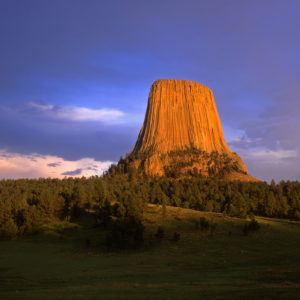In light of Interior Secretary Ryan Zinke’s review of national monuments, many Americans have expressed opposition to reducing protections for these federal lands. But designating a national monument doesn’t do much to change the management of the area itself. In some cases, designating a national monument might actually do more harm than good.
Take for example the Fossil Cycad National Monument in South Dakota, which was designated in 1922 to protect the area’s abundant fossils. Congress reversed the designation 35 years later because most of the surface fossils had been taken away in the pockets and backpacks of visitors to the monument. The designation brought the area fame but failed to protect the relics that made the area valuable.
In 2009, President Barack Obama signed into law the Paleontological Resources Preservation Act, which prohibits anything more than the “casual collecting” of most kinds of fossils without a permit. While removing fossils from federal lands has only recently been restricted, damaging or removing archaeological artifacts from federal lands was made illegal in 1979 by the Archaeological Resources Protection Act. Despite these laws, scientific and historic resources in national monuments continue to be damaged. On some occasions, the damage is even done by the managing agency itself.
Climbers routinely scale Devils Tower, the very first national monument, without too much concern from government agencies. President Theodore Roosevelt created Devils Tower National Monument in 1906 to protect the nearly 1,300 foot butte with cultural significance to more than 25 American Indian tribes. The butte attracts climbers from around the world, upsetting many American Indians.
In 1995, the National Park Service made a voluntary agreement with climbers and local tribes to try to discourage climbing on the butte, but only in the month of June, “when many Native American traditional cultural activities occur.” The agreement was partly effective for the first few years it was in place, but in recent years many climbers have disregarded the June ban and have returned to the monument. While the Park Service decides whether to take action, local tribes are forced to stand by and watch climbers ascend to the summit.
The agencies that manage national monuments can create management plans to increase protections for an area and restrict certain uses — and they frequently do. They’re not required to, however. Many national monuments are managed almost exactly as they were prior to their designation, with no increased vigilance to account for increased tourism brought by the designation.
Many worry that if Secretary Zinke reduces the size of Bears Ears National Monument in southern Utah, the area’s artifacts and history will not be protected. But past experiences suggest that the monument designation will not necessarily do any better. The designation does eliminate mineral extraction within the monument, which may protect the area from damages incurred by the machinery used to drill and mine. But the increased attention surrounding the newly designated monument will likely bring more people to the area and with them more bags to carry away artifacts, boots to walk through sensitive areas, and hands to damage the painted cliff walls.
The area contains invaluable resources for archaeologists and travelers alike, but the Bureau of Land Management has so far failed to make it clear how it will enforce laws and standards that protect archaeological resources in the monument.
Recently, the Property and Environment Research Center in Montana suggested several alternative land management possibilities. Their suggestions include turning areas that contain culturally significant areas or artifacts over to American Indian tribes, creating land trusts to manage monuments, leasing the areas to conservation groups, or allowing franchise groups to manage areas of concern. Any of these options would likely give the managing group better incentive to protect artifacts within the areas, which would likely achieve better protection results.
Recognizing that national monuments are far from a perfect conservation solution is crucial in beginning to explore more effective alternatives. Instead of arguing about keeping or losing national monument status, those who are concerned about protecting these special places need to get creative about developing better ways to conserve scientific, historic and cultural features on federal lands.

